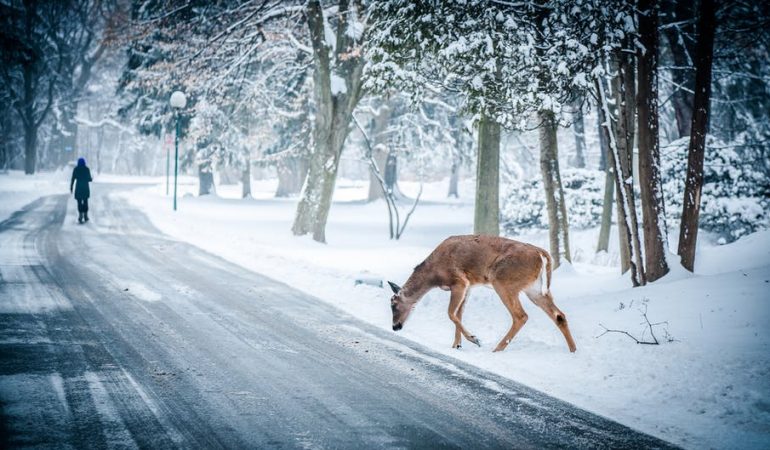3 Things You Need to Know About Auto Deer Damage
Auto insurance claims from deer damage have increased in the last few years, according to several sources. Writing for the Cincinnati Enquirer, Sarah Brookbank revealed that several states are high-risk areas for deer-related accidents. Motorists in Ohio, for example, face a 1 in 128 chance of colliding with the common whitetail while West Virginia drivers’ risk is 1 in 43. Most incidents occur in the fall, so it’s helpful to know some useful tips to avoid a crash as well as understanding how your policy handles run-ins with these woodland creatures.
Keep Your Eyes Peeled
The Insurance Information Institute offers several smart recommendations for steering clear of deer. Peak activity hours are usually between sunset and midnight, along with shortly before and after sunrise. This is especially true during their mating season, which typically lasts between October and December. Also, keep in mind that deer usually do not travel alone, so if you see one, assume that you’ll see more. Finally, stay on alert when moving through deer-crossing zones.
Defensive Driving Is the Key
A few other cautious practices can aid you in circumventing a collision. If you’re driving in the dark, your high-beams will light up the eyes of any deer on or near the road. Just make sure you don’t have them turned on when encountering oncoming traffic. Should you see any animals on the road, slow down and use your horn to alert them to your presence. Moreover, swerving to avoid hitting these creatures is a bad idea. Instead, braking firmly and remaining in your lane will help you keep control of your vehicle.
Will Insurance Pay for a Deer Collison?
Many motorists mistakenly believe that the collision portion of their auto policy pays for any deer-related damage. As your Cleveland car insurance agent will probably tell you, this sort of claim is paid for by the comprehensive segment of your insurance. That’s the same coverage that handles damage to your vehicle from fire, theft, vandalism, storm damage and other non-accident claims. Hopefully, you have it and collision along with your standard liability insurance. Without comprehensive coverage, you’ll have to shell out for deer damage repairs on your own.
Deer damage is never any fun, as it can result in expensive repairs and injuries. Avoid collisions by paying attention when you’re driving in the dark during mating season. Defensive driving techniques, such as slowing down, braking firmly, and turning on your high-beams, are also smart strategies. These best practices can help you sidestep an accident with a whitetail and keep you claims-free each fall.




